Rating index:
Extraordinary (96-100)
Outstanding (93-95)
Very good to Excellent (89-92)
Above average to Good (86-88)
Below Average to Average (80-85)
Avoid (below 80)
More info >
Extraordinary (96-100)
Outstanding (93-95)
Very good to Excellent (89-92)
Above average to Good (86-88)
Below Average to Average (80-85)
Avoid (below 80)
More info >
Bloemendaal is a small to medium-sized, rather posh town, some 15 miles west of Amsterdam and close to the North Sea coastline. In the middle of the town centre you will find restaurant Chapeau, which is housed in an elegant "town villa" as they are called in the Netherlands, which used to serve as a hotel. Chapeau opened its doors in 1996 and is run by Ronald Voogel and his partner Esther de Wit. At the helm of the kitchen is Jan Sobecki, who became head chef in 2010. At the time the restaurant had had a Michelin star since 2003. Under Sobecki's guidance the restaurant was awarded a second Michelin star in 2011 (2012 guide). Jan Sobecki trained in restaurants in New York and Chicago, but the experience he gained at the iconic Paris restaurants Drouant and Ledoyen warrants particular mention.
Restaurant Chapeau is open for dinner Tuesday till Saturday and for lunch Wednesday till Friday. The restaurant offers a 'Menu Alliance Gastronomique' tasting menu (4 courses €75, 5 courses €90, 6 courses €100), a 'Menu Chapeau' (4 courses €110), a set lunch menu (2 courses €39, 3 courses €55) and there's the à la carte menu. From Tuesday till Thursday the restaurant also serves a set dinner menu (3 courses €55). I had lunch with my husband at Chapeau on Thursday 12 September 2013 and we ordered dishes from both the Menu Alliance Gastronomique and the Menu Chapeau.
With our aperitifs the first two amuse bouches were served. First a crisp sweet potato and foie gras cylinder, with a calamansi bonbon. Calamansi is a citrus fruit, also known as Philippine lime. A nice combination of textures and lovely bitter-sweet flavours from the calamansi. This was followed by tender, steamed cockles with fennel, crunchy sourdough croutons, topped with a light crème fraîche foam. An elegant and delicious combination.
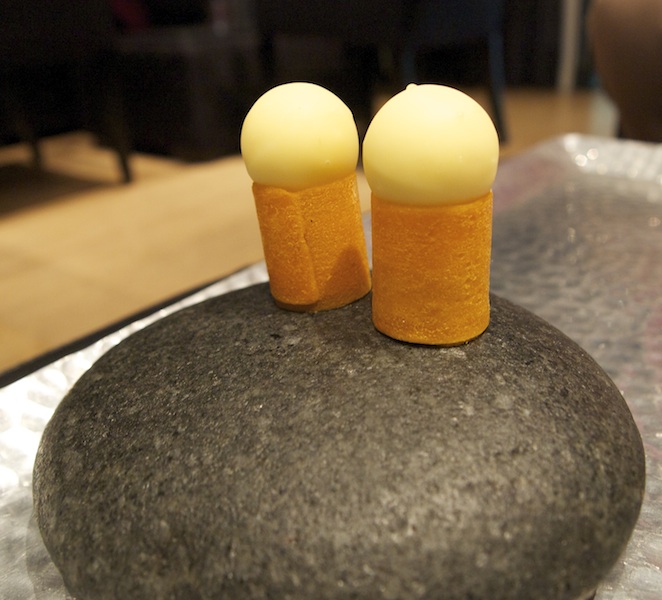
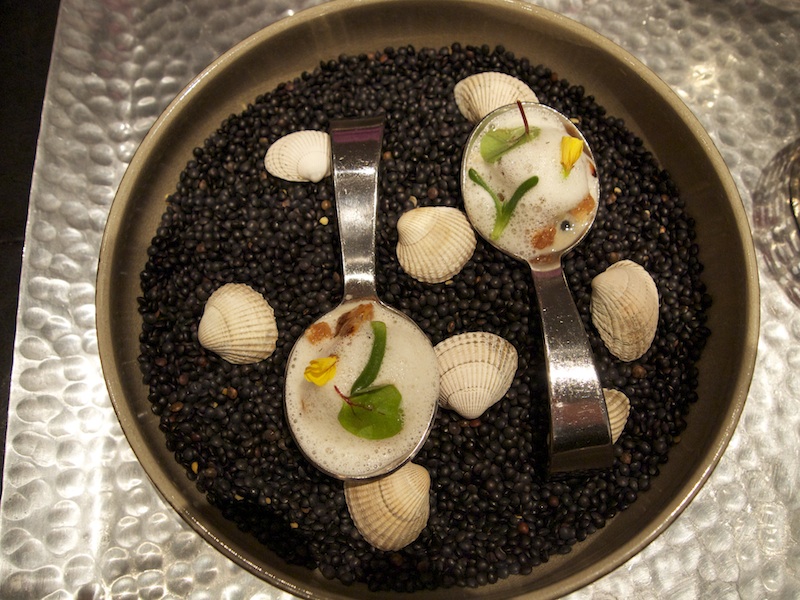
The third and final amuse bouche was a dish comprised of lightly pickled vegetables such as broad beans, beetroot, mexican cucumber and green beans, sprinkled with a mildly tart sea buckthorn dressing and accompanied by a bean and mushroom mousseline, crisp croutons, radish and lemon jelly. Lovely bite from the pickled vegetables and a nice touch of warmth from the mushroom and bean mousseline. Well-balanced flavours and acidity.
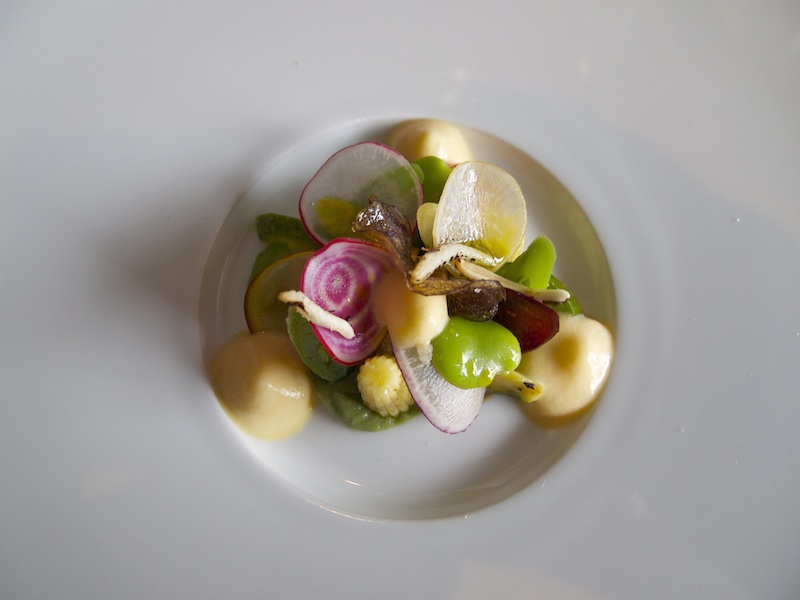
Next up was the first course, Langoustine Escabèche. The Escabèche came three ways; first an elegant display of 'Escabèche' vegetables, like carrot, runner beans, radish, broad beans, green aspargus tips, mushroom, pickled red onion, spring onion and crispy sweet potato. To accompany the succulent and juicy langoustine, there was a refined Escabèche sauce, with fantastic dark and smoky flavours and a highly addictive sweetness. Last but not least there was a brilliant Escabèche mousseline, that had a mayo-like texture and the most wonderful and intense shellfish flavours. An artistically presented dish with the most amazing long aftertaste and a great balance of sweet, salty and bitter flavours. Loved the interplay between the Escabèche sauce and mousseline. The Escabèche vegetables were all perfectly prepared and the freshness of the vegetables provided an excellent balance to the more rich and concentrated flavours in this dish.
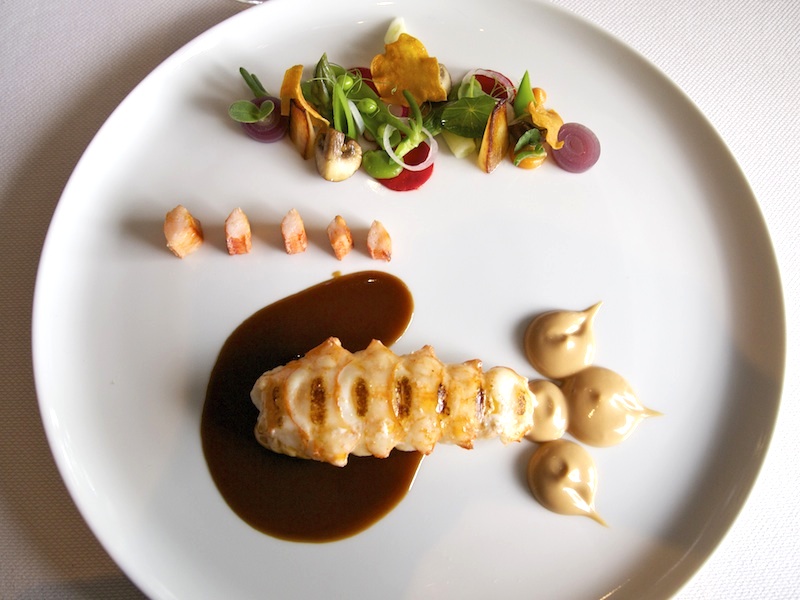
This was followed by a wonderfully creamy oyster that was full of natural juices, served with pak choi (fresh and a light foam), sea lavender leaves (fresh and puree), a sesame cracker and complemented by a soy, rice vinegar and ponzu dressing. An intricate dish with a beautiful balance between freshness and warmth/comfort and again highly addictive flavours with great length. The natural salinity of the oyster and sea lavender combined wonderfully with the dressing, which had just the right amount of ponzu, the latter also enhancing the natural sweetness of the oyster.

Third course, moist and flavoursome sea bass, cooked in cumin oil, served on some crunchy kohlrabi 'risotto'. On top of the seabass was a crispy cumin cracker, covered with delicious mixture of thin Culatello ham, raisins, dots of yoghurt cream and finely chopped lemon confit. Equally good was a creamy fenugreek sauce. A fabulous dish with a terrific use of spices. Great warmth and subtle bitters from the fenugreek and the cumin added a wonderful depth of flavour to the dish. The salty ham added texture and contrast.
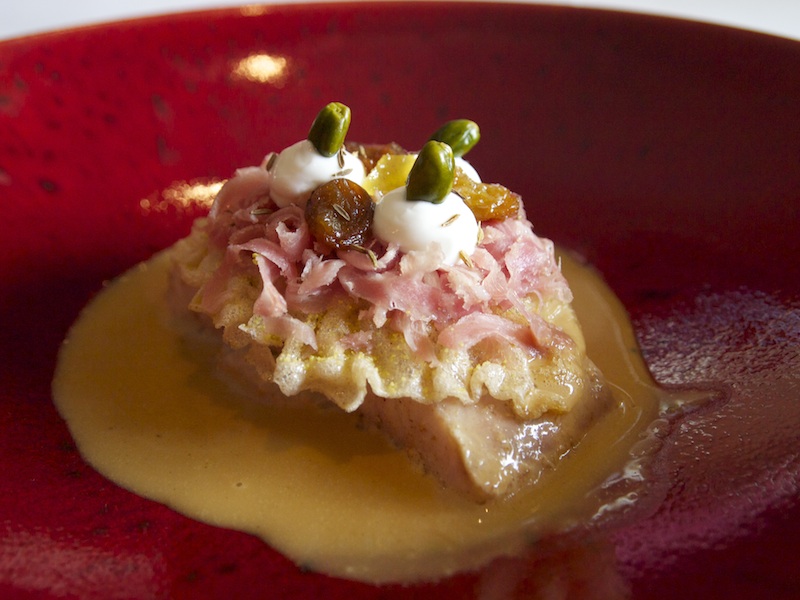
Potato gnocchi were next. A high impact dish dish of well-made potato gnocchi, confit tomato, an elegantly sweet molasses sauce, basil oil and an intense Parmesan foam. A powerful but balanced dish that had nicely captured the five basic flavours: salt, sweet, bitter, sour and umami. Loved the lightness of the basil oil and the Parmesan foam gave the dish a nice creamy finish.
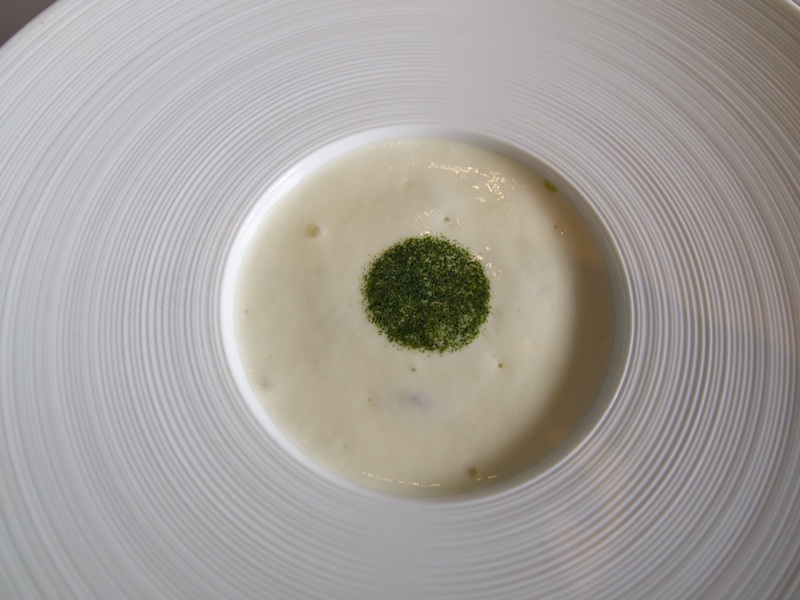
Main and fifth course was beautifully pink, tender and perfectly moist pigeon breast, served with the pigeon heart and liver and a superb pigeon jus made with the roasting juices. The pigeon was roasted whole, no water bath involved. Tender leg meat was served in a crisp cylinder, placed on top of some silky celeriac puree. Also on the plate were braised onion, artichokes, girolles, beetroot, Jersusalem artichoke puree and turnip tops sprinkled with a light parsley oil/sauce. A carefully constructed and executed dish with rich and intense pigeon flavours, balanced slightly by the parsley. I was seriously impressed by the skill involved in roasting this pigeon so perfectly.

Dessert was a lemon meringue 'dome' with a lemongrass ice cream inside and a biscuit base, served with some apple and lemon granita. On top of the meringue dome were mini meringues, dots of light green lime puree, candied lemon zest discs, and dots of dark green lemon balm puree Both purees had incredibly, intense flavours. An attractive and wonderfully refreshing dessert with great textures and a lovely symphony of complex citrus flavours.
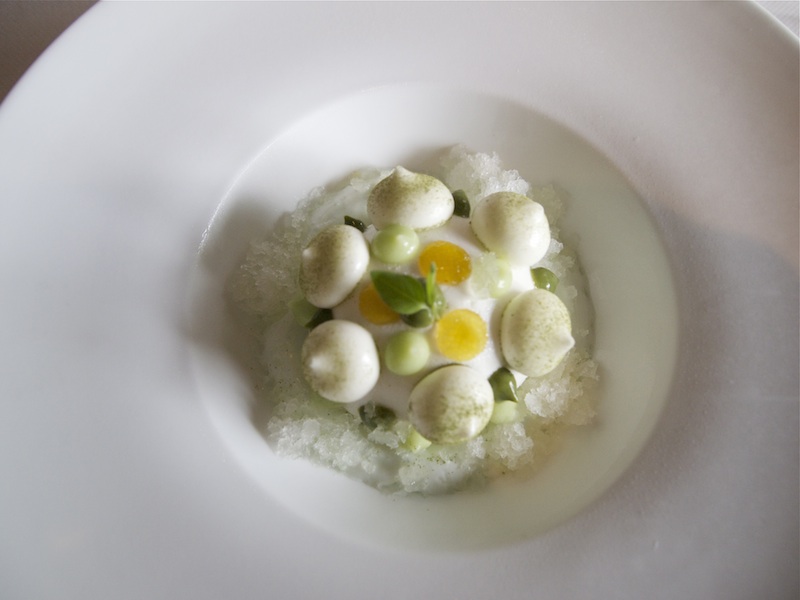
Jan Sobecki is still a young chef (he is only 33 years old) but he presented us with a very mature meal of the highest quality. He showed convincingly that he has mastered a broad range of ingredients, styles and techniques. What really stands out in his cooking is that he manages to imbue his dishes with an incredible sense of comfort, but not at the expense of finesse or elegance. The harmony which he achieves on his plates from potentially contrasting flavours and ingredients, without compromising tension and excitement, is a marvel to behold. Sobecki is an incredibly skilled chef and on the basis of my two visits (the first one was in March 2013) I feel confident to say that Chapeau is a two-star establishment right at the top of its game but with many years of exciting developments ahead.













